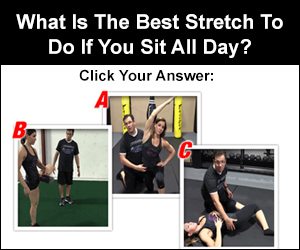A strong core is essential for overall fitness and daily activities. It provides stability, improves posture, and enhances athletic performance. Developing a strong core involves targeted exercises that engage the muscles of the abdomen, lower back, and pelvis.

Building core strength requires consistency and proper technique. Regular practice of exercises like planks, crunches, and Russian twists can yield significant results. Incorporating a variety of movements helps target different muscle groups within the core.
Core training benefits extend beyond aesthetics. A robust midsection supports the spine, reduces the risk of injuries, and improves balance. It also enhances functional movements in everyday life, from lifting groceries to playing sports.
Key Takeaways
- Core strength improves stability, posture, and athletic performance
- Consistent practice of targeted exercises is crucial for core development
- A strong core supports daily activities and reduces injury risk
Understanding Core Musculature
The core is a complex system of muscles that plays a crucial role in stability, posture, and overall health. It encompasses more than just the visible abdominal muscles.
Anatomy of the Core
The core consists of several key muscle groups. The rectus abdominis, commonly known as the “six-pack,” runs vertically along the front of the abdomen. The internal and external obliques wrap around the sides of the torso. The transverse abdominis, the deepest abdominal muscle, acts like a corset around the midsection.
The erector spinae group runs along the spine, providing support and allowing for back extension. The multifidus, a series of small muscles, stabilizes the vertebrae. The pelvic floor muscles form the base of the core, supporting the pelvic organs.
Hip flexors, while not strictly part of the core, work in conjunction with these muscles for optimal function.
Role of Core in Stability and Posture
A strong core is essential for maintaining proper posture and stability. The transverse abdominis and multifidus activate before other muscles during movement, creating a stable base. This anticipatory activation helps protect the spine and maintain balance.
The rectus abdominis and obliques work together to control trunk flexion and rotation. The erector spinae muscles counteract these forces, allowing for upright posture and controlled movement of the spine.
Weak core muscles can lead to poor posture, increasing the risk of back pain and injuries. A well-conditioned core helps distribute forces evenly across the body, reducing strain on individual structures.
Impact of Core Strength on Overall Health
Core strength influences various aspects of health and physical performance. A strong core can alleviate and prevent back pain by providing better support for the spine. It improves balance and coordination, reducing the risk of falls, especially in older adults.
Core strength enhances athletic performance across various sports and activities. It allows for more efficient transfer of power between the upper and lower body. This improved power transfer can lead to better performance in activities like running, throwing, and lifting.
A strong core also aids in daily activities, making tasks like lifting groceries or bending to tie shoelaces easier and safer. It can improve breathing efficiency by stabilizing the torso, allowing the diaphragm to function optimally.
Core Training Fundamentals
Building a strong core requires mastering key exercises and principles while integrating consistent training into your routine. The following subsections explore effective techniques and strategies for developing core strength.
Effective Core Exercises
Planks form the foundation of core training. Hold a straight-arm or forearm position, engaging the entire midsection. Side planks target obliques and improve lateral stability.
Russian twists strengthen the rotational muscles. Sit with knees bent, feet off the ground, and twist side to side while holding a weight.
Dead bugs enhance core control. Lie on your back, extend opposite arm and leg while keeping your lower back pressed to the floor.
Bird dogs improve balance and coordination. Start on hands and knees, then extend opposite arm and leg while maintaining a stable spine.
Principles of Core Strengthening
Progressive overload is crucial for core development. Gradually increase difficulty by adding weight, reps, or time to exercises.
Focus on proper form to maximize benefits and prevent injury. Maintain a neutral spine and avoid excessive arching or rounding of the back.
Activate the core through bracing. Imagine preparing for a punch to the stomach, engaging all abdominal muscles simultaneously.
Incorporate anti-movement exercises. Resist rotation, flexion, and extension to build functional strength for everyday activities.
Incorporating Core Work into Your Routine
Aim for 2-3 dedicated core sessions per week. Each session should last 10-15 minutes and include a variety of exercises.
Integrate core work into other exercises. Engage the core during squats, deadlifts, and overhead presses to enhance stability.
Use compound movements that naturally engage the core. Pull-ups, push-ups, and rowing exercises activate multiple muscle groups, including the core.
Add core finishers to your workouts. End sessions with a brief core circuit to ensure consistent training without scheduling separate sessions.
Specialized Core Workouts for Different Goals

Core training can be tailored to meet specific needs and objectives. The right exercises and routines vary based on factors like athletic pursuits, health conditions, and age.
Core Workouts for Athletes
Athletes require core strength for enhanced performance and injury prevention. Rotational exercises like Russian twists and medicine ball throws improve power and agility. Planks and side planks build stability for sports-specific movements.
Anti-rotation exercises such as Pallof presses strengthen the core’s ability to resist unwanted motion. Compound movements like deadlifts and squats engage the core while mimicking athletic actions.
Athletes should incorporate dynamic exercises like mountain climbers and bicycle crunches to improve core endurance. Plyometric core moves like plank jacks can boost explosive power.
Managing Back Pain Through Core Training
Core exercises can alleviate and prevent back pain by improving stability and posture. Gentle exercises like cat-cow stretches and pelvic tilts help mobilize the spine and activate deep core muscles.
Bird dogs and dead bugs strengthen the core while maintaining a neutral spine position. These exercises are particularly beneficial for those with lower back issues.
Gradual progression to more challenging moves like bridges and modified planks can further strengthen the core without straining the back. Proper form and controlled movements are crucial to avoid exacerbating pain.
Core Exercises for Seniors
Seniors benefit from core exercises that focus on balance, stability, and functional strength. Chair-based exercises provide support and safety for those with limited mobility.
Seated marches and gentle twists engage the core muscles while improving coordination. Standing exercises like wall planks and countertop push-ups build strength for daily activities.
Balance exercises such as single-leg stands with core engagement help prevent falls. Gentle yoga poses like cat-cow and child’s pose can improve flexibility and core awareness.
Seniors should start with short sessions and gradually increase duration and intensity. Consistency is key for maintaining core strength and overall well-being in older adults.
Mastering Core Exercises
Developing a strong core requires mastering key exercises and progression techniques. Focus on proper form and gradually increasing difficulty to build strength and stability.
Bodyweight Movements
Planks are essential for core stability. Start with a 30-second hold, maintaining a straight line from head to heels. Side planks target obliques; hold for 15-30 seconds on each side. Crunches work the rectus abdominis; perform 2-3 sets of 15-20 reps.
Bird dogs enhance balance and coordination. Begin on hands and knees, extend opposite arm and leg, hold for 5 seconds. Perform 10 reps per side. Supermans strengthen the lower back; lie face down, lift arms and legs off the floor for 10-15 seconds.
Bridges activate glutes and lower back muscles. Lie on your back, knees bent, lift hips off the floor. Hold for 30 seconds. Leg raises target lower abs; lie on your back, raise legs to 90 degrees, lower slowly. Aim for 2-3 sets of 10-15 reps.
Weighted Core Exercises
Incorporating weights intensifies core workouts. Russian twists with a dumbbell or medicine ball engage obliques. Sit with knees bent, feet off the floor, twist side to side. Perform 2-3 sets of 20 total rotations.
Weighted crunches increase resistance. Hold a plate or dumbbell on your chest while performing standard crunches. Start with 3 sets of 10-15 reps. Cable crunches offer consistent tension throughout the movement. Kneel facing a cable machine, crunch downward. Do 3 sets of 12-15 reps.
Woodchoppers mimic a chopping motion, working obliques and rotational strength. Use a cable machine or resistance band. Perform 3 sets of 10-12 reps on each side.
Progressions and Modifications
Beginners should start with basic movements and focus on form. For planks, start on knees before progressing to full extension. Crunches can be modified by keeping feet on the floor instead of elevating them.
Intermediate exercisers can increase hold times for isometric exercises like planks and bridges. Add instability with exercise balls or BOSU balls to challenge balance. Advanced individuals might incorporate plyometric movements, like plank jacks or mountain climbers.
Proper breathing is crucial. Exhale during exertion and inhale during the relaxation phase. This helps maintain core tension and stability throughout exercises. Always listen to your body and avoid pain. Consistency and gradual progression are key to developing a strong, resilient core.
Advanced Core Training Techniques
Core training extends beyond basic crunches and planks. Advanced techniques incorporate functional movements, sport-specific exercises, and proper form to maximize results.
Functional and Compound Movements
Functional core exercises mimic real-life activities and engage multiple muscle groups. These movements improve overall strength and stability.
Turkish get-ups challenge the entire core while enhancing shoulder stability. Start by lying down, holding a kettlebell overhead, and stand up while keeping the weight lifted.
Pallof presses target anti-rotation muscles. Stand sideways to a cable machine, press the handle forward, and resist rotation.
Compound lifts like squats and deadlifts engage the core as stabilizers. Proper bracing technique is crucial for these exercises.
Farmer’s walks strengthen the core while improving grip strength. Carry heavy dumbbells or kettlebells for distance, maintaining an upright posture.
Core Training for Specific Sports
Athletes benefit from sport-specific core training that enhances performance and reduces injury risk.
Rotational exercises like medicine ball throws are vital for baseball and golf. These movements improve power and control in swinging motions.
Swimmers can focus on hollow body holds to enhance streamline position. This exercise strengthens the deep core muscles used to maintain proper form in the water.
Soccer players benefit from single-leg stability exercises. Perform standing knee raises while maintaining balance to improve core strength and leg control.
Martial artists can practice dynamic planks with punching motions. This combines core stability with upper body movement, mimicking fighting techniques.
Avoiding Common Mistakes
Proper form is essential in advanced core training to prevent injuries and maximize results.
Avoid excessive spinal flexion during crunches. Focus on a small range of motion, lifting the shoulders off the ground without straining the neck.
Don’t neglect the lower back. Include exercises like supermans or bird dogs to balance anterior and posterior core strength.
Breathing technique matters. Exhale during the most challenging part of each movement to maintain proper core engagement.
Vary exercise selection to target all core muscles. Include rotational, anti-rotation, and stabilization exercises for a well-rounded routine.

